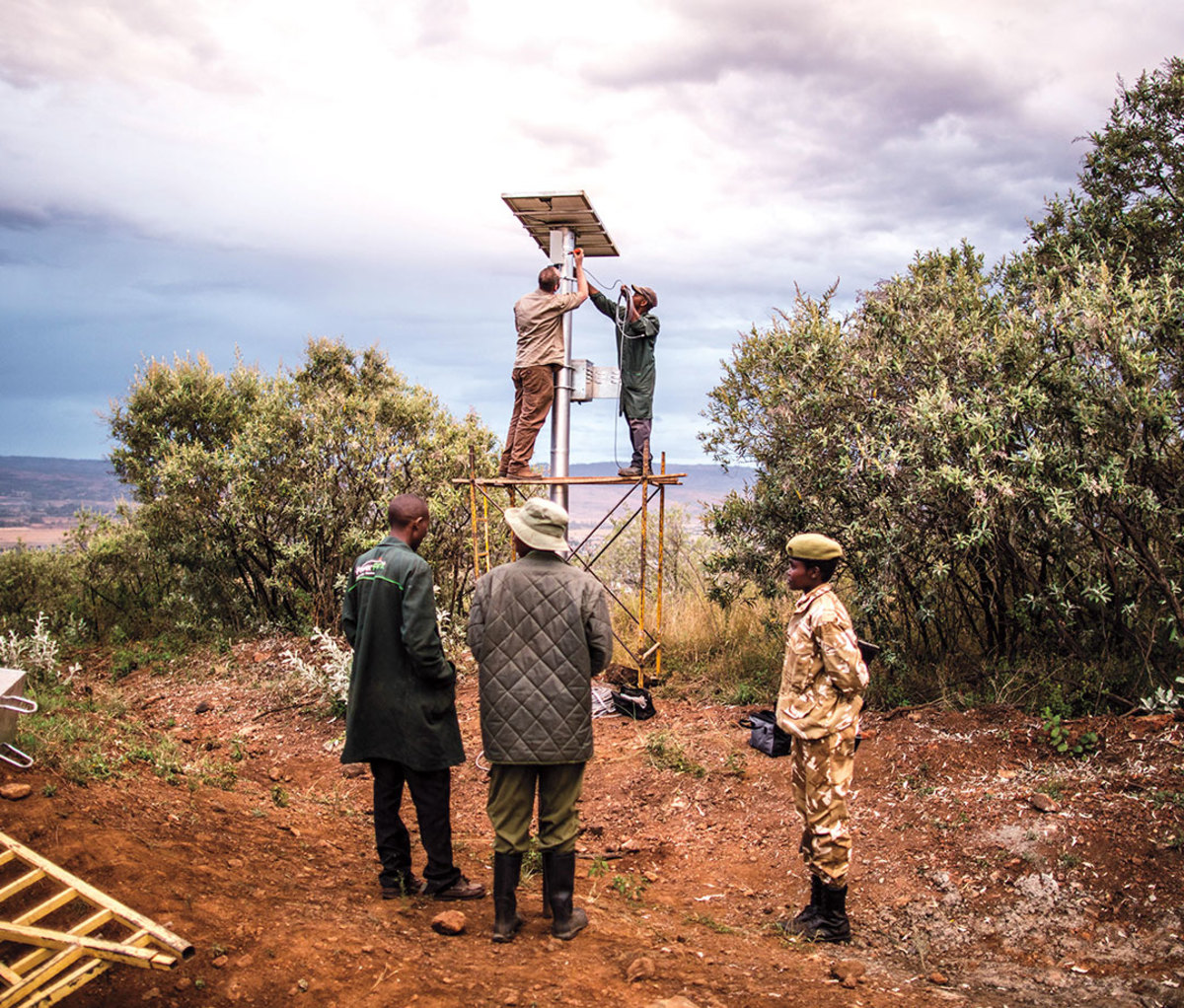[ad_1]
Early in August, movement in a remote part of Kenya’s Maasai Mara National Reserve woke a sleeping trail camera. In seconds a processor chip took four photos, ran an artificial intelligence program that recognized a human shape and sent the highest-quality image via satellite to park headquarters. Rangers saw it was one of their own on patrol, not a poacher on an illegal hunt, dismissed the alert and got back to work. False alarm, sure, but for biologist Eric Dinerstein it was proof a new technology called TrailGuard AI works.
“Nothing beats a photo for telling if it’s a cattle herder or someone carrying an AK-47,” says Dinerstein, who helped develop the system for RESOLVE, a conservation nonprofit. “TrailGuard is a camera, but I think of it more as an AI-supported poacher alarm.”
Now being distributed to parks across Africa and Asia, the devices are part of a growing pool of innovative technology aimed at protecting habitat and wildlife. Rates of poaching are increasing, particularly in Africa where poachers kill an elephant every 15 minutes, according to the World Animal Foundation.
“Technology is going to play a critical roll in saving wildlife,” says Eric Becker, a conservation engineer with the WWF, a wildlife-focused NGO. “The right tools can be a force multiplier for rangers.”

Rangers typically hunt for signs of poaching during the day and conduct stakeouts at night. Efforts are often futile, wasting scarce resources, and, when successful, dangerous. At least 1,000 rangers have died at work in the last decade, as many as half those deaths at the hands of poachers.
New tech is helping save wildlife and make the ranger’s job safer. In Kenya, Becker, a former Air Force Research lab engineer, helped deploy thermal-imaging cameras to spot poachers from afar. “Rangers no longer patrol randomly,” he says. “They can set up to completely overwhelm the poachers and make arrests.”
Other groups are working on different solutions: traceable chips embedded in rhino horns and elephant tusks to bust trading networks; tracking collars that monitor wildlife movement for signs of stress; analytical tools that identify patterns, like poaching hot spots; and the CAKE Kalk AP, an electric dirt bike designed to help rangers sneak up on poachers. “We usually have to hack or custom develop conservation tools,” Becker says. “Off-the-shelf solutions aren’t usually baboon-proof.”
Preventative and noninvasive measures, like TrailGuard, are the most valuable, says Dinerstein. An early version of the device alerted rangers to a group of poachers entering Serengeti National Park in Tanzania. With the help of tracking dogs, the rangers arrested 30 poachers.
“Several million years of canine olfactory evolution and the latest tech and AI,” says Dinerstein. “It’s a killer combination.”
For access to exclusive gear videos, celebrity interviews, and more, subscribe on YouTube!
[ad_2]